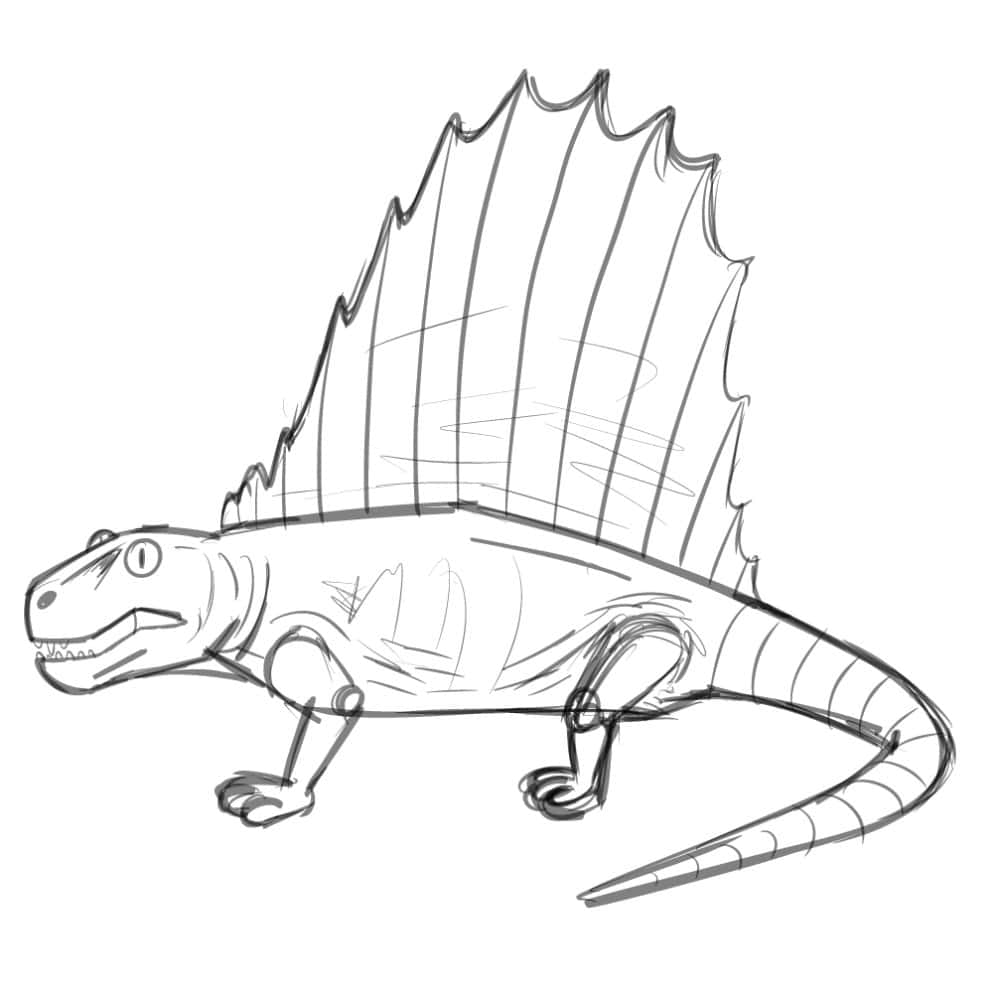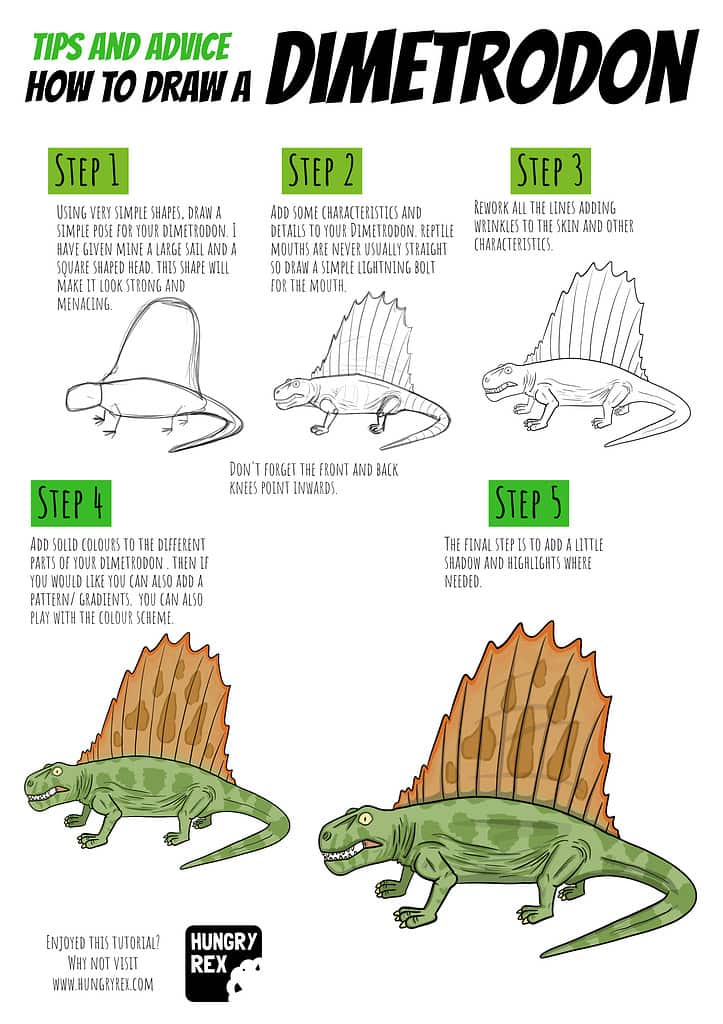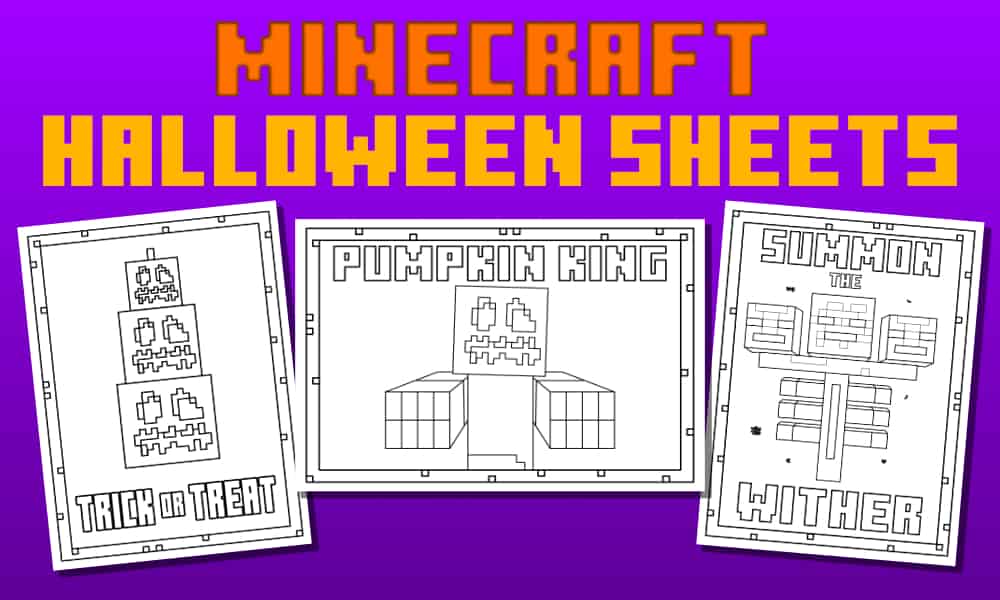Take a journey back in time and meet the fascinating dimetrodon, a cool creature that lived more than 250 million years ago. With its special sail on its back and other interesting things, it’s a neat idea for artists who like drawing old things!
Dimetrodon isn’t a dinosaur, even though it looks a bit like one. It’s actually a special kind of reptile called a synapsid. The most remarkable thing about dimetrodon is its big sail on its back, made from long pointy bones. This sail helped it do different things, like staying at the right temperature and maybe showing off to friends. Some dimetrodon were small, and some were big, ranging from about 5.6 to 15.1 feet long.
Dimetrodon was a meat-eater, which means it liked to eat other animals. It had sharp teeth that were good for cutting up meat. It probably ate things like fish, frogs, and small animals. With its strong jaw muscles and unique teeth, dimetrodon was a pretty good hunter. Even though it lived at the same time as early dinosaurs, dimetrodon was a unique critter that had its own cool stuff going on. Drawing dimetrodon can be a fun way to imagine what the past was like!
How to draw a Dimetrodon
Step 1 – Keep it simple

Using very simple shapes, draw a simple pose for your dimetrodon. I have given my Dimetrodon a large sail and a square-shaped head. this shape will make it look strong and menacing. Keep in mind that Dimetrodon’s legs point inwards, so the knees on the front and the back face each other.
Step 2 – Rough sketch

Add some characteristics and details to your Dimetrodon. reptile mouths are never usually straight so draw a simple lightning bolt for the mouth.
Step 3 – Refine the lines

Rework all the lines adding wrinkles to the skin and other characteristics. Draw creases that flow around the leg joints and the neck.
Step 4 – Colours

Add solid colours to the different parts of your dimetrodon, then if you would like you can also add a pattern/ gradients. you can also play with the colour scheme. It’s a nice idea to check out some animals with patterned skin for reference. I used images of leopards and tigers for my inspiration.
Step 5 – Shadows and highlights

The final step is to add a little shadow and highlights where needed. Use black and turn down the opacity of a new layer then add Shadows to the Dimetrodon. It is a nice way to pick out little extra details.
Prefer to work from paper?
Download this printer-friendly, high-quality, version for free!




